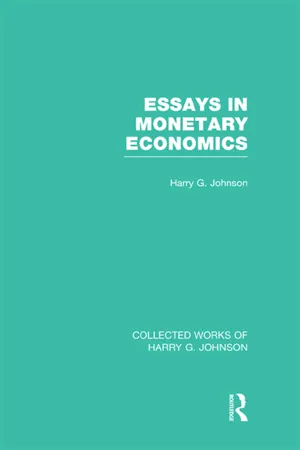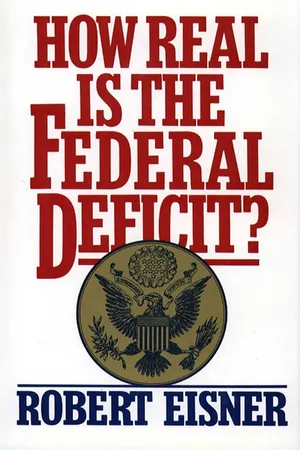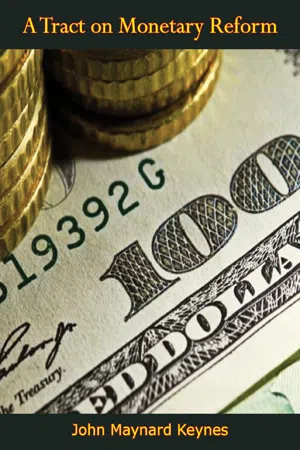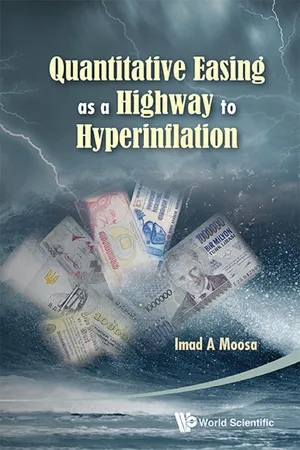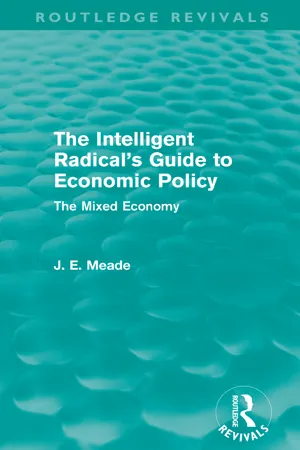Economics
Inflation Tax
Inflation tax refers to the reduction in the real value of money due to inflation, resulting in a de facto tax on cash holdings. As prices rise, the purchasing power of money decreases, effectively imposing a tax on individuals and businesses holding cash or cash equivalents. This concept highlights the impact of inflation on wealth and financial planning.
Written by Perlego with AI-assistance
Related key terms
Related key terms
1 of 4
Related key terms
1 of 3
9 Key excerpts on "Inflation Tax"
- eBook - ePub
- P.C.I. Ayre(Author)
- 2013(Publication Date)
- Routledge(Publisher)
The Inflation Tax in Developing Countries 1 by W. T. Newlyn * The concept of the Inflation Tax is best described initially by the following quotation from Harry Johnson: In order to maintain its real balances constant in the face of inflation, the public must accumulate money balances at a rate equal to the inflation; this accumulation of money balances in order to preserve real balances is achieved at the cost of sacrificing the consumption of current real income in order to maintain real balances intact, the release of current real income constituting the equivalent of a ‘tax’ on the holders of real balances; the tax on real balances, in turn, accrues as revenue to the beneficiaries of the inflationary increase in the money supply. [ Johnson, 1967, Ch. III.] A qualification must be made as to how the ‘tax revenue accrues to the beneficiaries’. The use of the term ‘tax’ does not imply that the beneficiary is necessarily the government; it may be a private institution which is enabled to appropriate the real resources given up by money holders. In this respect there is a strong similarity between the forced saving resulting from inflation and what the present writer has called the ‘involuntary saving’ resulting from the need to accumulate transactions balances associated with real growth [ Newlyn 1962: 162 ]. The distinction is that in the latter case real balances increase whereas in the case of the Inflation Tax nominal balances have to be accumulated in order to maintain a given level of real balances - Harry Johnson(Author)
- 2013(Publication Date)
- Routledge(Publisher)
In Figure 1, the cost of inflation to the economy is measurable by the area P'MD', and can be approximated by the formula where Ṗ is the rate of inflation, is the ratio of money to income held at the given rate of inflation, and η is the inflation-elasticity of the ratio of money to income. (In a more elaborate analysis, it would be necessary to recognize that the fact that interest is not paid on cash balances implies a social loss from the substitution of real resources for money in the absence of inflation, a loss aggravated by the effect of inflation in discouraging the use of money.) Finally, the notion of inflation as a tax, and of the cost of inflation as a sort of ‘collection cost’ of this tax, implies certain analogies between inflation and the more explicit taxes levied by the government, including the concept of the optimum rate of inflation from the point of view of the government, that is, the rate of inflation that maximizes the proportion of national income put at the government’s disposal by inflation; these analogies have been developed by Martin J. Bailey in an important article on the welfare cost of inflationary finance. 1 The quantity theory approach to the theory of inflation has been subjected to a substantial amount of empirical testing, both in A. J. Brown’s study of The Great Inflation, 1939–51, and by members of the University of Chicago Money and Banking Workshop. The most striking evidence in its favour is Philip Cagan’s study of six hyper-inflations, which discovered a remarkably stable demand function for money of the type depicted in Figure 1 underlying the behaviour of the six economies undergoing hyper-inflation- eBook - ePub
- Victor Thuronyi(Author)
- 1996(Publication Date)
- INTERNATIONAL MONETARY FUND(Publisher)
In abstract terms, the income tax base can be conceived of as consumption plus change in net worth between two points of time that are infinitesimally close. 18 The delay between collecting tax immediately and waiting until the end of the year is a collection lag. The effect of inflation on tax base measurement arises because in order to ascertain the change in net worth, one must subtract net worth at the beginning of the period from net worth at the end of the period. 19 When there is inflation, this exercise should be performed by adjusting the beginning value for the inflation that has occurred during the period. To do so is central to the motivation for the income tax base. The base measures how much the taxpayer could have consumed during the period without altering the value of his or her wealth. A merely nominal increase in wealth should not be counted as giving rise to consumption potential. Only a change in wealth above and beyond inflation can be consumed while leaving the taxpayer’s stock of wealth unchanged in real terms. 20 D. Reason for Categorization In one sense, it can be said that inflation has only one effect on taxation, as on anything else, which is to erode values expressed in units of national currency. The above categories are therefore all subcategories of this one effect. What distinguishes them is not so much mathematical logic as it is the practicalities of how taxes work. It is helpful to distinguish among these categories in order to understand the effects of inflation on taxation in a concrete and practical way and in order to formulate workable solutions to counteract these effects. For example, one often hears complaints that inflation causes people to be taxed at higher and higher marginal rates (so-called bracket creep). It may seem, therefore, that this is a problem with the rates and that the remedy is to reduce the rates - eBook - ePub
- Robert Eisner(Author)
- 2010(Publication Date)
- Free Press(Publisher)
2
Tricks Played by Inflation
INFLATION HAS BEEN CALLED the cruellest tax of all. Whether it is the cruellest is debatable, but in its economic effects, inflation certainly is a tax. We know we have to count it in calculating what the government takes from the public. And therefore we have to count it in reckoning the federal deficit—the difference between the government’s outgo and its income.The significance of a deficit—individual, business, or governmental—is that, unless we dip into capital, we must borrow to finance it. That increases our debt.1 The federal government, it is true, can finance a deficit by creating money—which economists would call non-interest-bearing debt. That does add some complications but, as we shall see, does not change the essential issue.What do we do, though, when a dollar isn’t a dollar any more? A basic premise in economics—for all schools of economic thought—is that we must avoid “money illusion, ” the confusion of nominal and real magnitudes. A person earning $60,000 today is obviously no better off than a similar person earning $20,000 twenty years ago, if prices in the marketplace now are three times as high. But similarly, a person with a debt of $60,000 today is no worse off than a person with a debt of $20,000 twenty years ago. For individuals, businesses, and government, it is the real debt—the debt after adjustment for inflation—that matters.If we already owe $100,000 on a mortgage loan on our home and then borrow to spend $5,000 more than our income, our total debt of course rises to $105,000. But suppose, in the meantime, the value of a dollar has fallen by 10 percent because of inflation. That, in effect, cuts the real burden of our existing, mortgage debt to $90,000 just as surely as if, without the inflation, we had somehow paid off $10,000. Adding the $5,000 of new borrowing gives us a new total debt of $95,000. We started with a debt of $100,000. Did our total debt then, in meaningful economic terms, or in dollars of constant purchasing power, rise by $5,000 or fall by $5,000? - eBook - ePub
- John Maynard Keynes(Author)
- 2018(Publication Date)
- Papamoa Press(Publisher)
On whom has the tax fallen? Clearly on the holders of the original 9,000,000 notes, whose notes are now worth 25 per cent less than they were before. The inflation has amounted to a tax of 25 per cent on all holders of notes in proportion to their holdings. The burden of the tax is well spread, cannot be evaded, costs nothing to collect, and falls, in a rough sort of way, in proportion to the wealth of the victim. No wonder its superficial advantages have attracted Ministers of Finance.Temporarily, the yield of the tax is even a little better for the Government than by the above calculation. For the new notes can be passed off at first at the same value as though there were still only 9,000,000 notes altogether. It is only after the new notes get into circulation and people begin to spend them that they realise that the notes are worth less than before.What is there to prevent the Government from repeating this process over and over again? The reader must observe that the aggregate note issue is still worth $36,000,000. If, therefore, the Government now prints a further 4,000,000 notes, there will be 16,000,000 notes altogether, which by the same argument as before are worth $2.25 each instead of $3, and by issuing the 4,000,000 notes the Government has, just as before, transferred an amount of resources equal to $9,000,000 from the public to itself. The holders of notes have again suffered a tax of 25 per cent in proportion to their holdings.Like other forms of taxation, these exactions, if overdone and out of proportion to the wealth of the community, must diminish its prosperity and lower its standards, so that at the lower standard of life the aggregate value of the currency may fall and still be enough to go round. But this effect cannot interfere very much with the efficacy of taxing by inflation. Even if the aggregate real value of the currency falls for these reasons to a half or two-thirds of what it was before, which represents a tremendous lowering of the standards of life, this only means that the quantity of notes which the Government must issue in order to obtain a given result must be raised proportionately. It remains true that by this means the Government can still secure for itself a large share of the available surplus of the community. - Imad A Moosa(Author)
- 2013(Publication Date)
- WSPC(Publisher)
Chapter 1INFLATION, DEFLATION, DISINFLATION AND ALL THAT1.1.What is Inflation?It is often said that inflation is inevitable, like death and taxes. This is probably because, as Sir Frederick Keith-Ross mentions, “inflation is like sin; every government denounces it and every government practices it” (Makochekanwa, 2007). Historical stories about inflationary episodes proves that it is a phenomenon that has existed ever since money was used as a medium of exchange. Inflation is a topic that receives significant attention in the media, with regular features, reports and interviews. It is an issue that is often debated by politicians in Parliament and election campaigns, let alone economists and business executives.The reason why inflation is treated with “respect” is that it affects everybody in various ways. It is an important consideration during mortgage payments and in determining the cost of essential goods and services required for survival and those that make our lives more pleasant. We anticipate news about whether the central bank will decide to cut or raise interest rates, with inflation typically being the prime consideration (at least for some central banks). Most of us are fascinated by documentaries on the great inflation in Germany during the 1920s and how it relates to the rise of Adolf Hitler. Inflation has broad implications for the state of the economy and whether or not we can keep our jobs or find new ones. While it is regarded as one of the four macroeconomic variables closely monitored by policymakers (the others being growth, employment and the balance of payments), it is often the prime indicator that triggers drastic policy actions. “Inflation targeting” is a more common concept than “output targeting”, “employment targeting” or “balance of payments targeting”.Inflation is defined in different ways, but, in general, the phenomenon is about rising prices of goods and services (hence, the cost of living). As the prices of goods and services rise, the value (or purchasing power) of money falls in the sense that a monetary unit (say a dollar) buys less and less goods and services resulting in a diminishing basket. This is why inflation is viewed as a “persistent” erosion of the value of the money. While it cost 60 pounds to purchase a first class ticket on the Titanic in 1912, there is no way these days that this amount can buy a ticket to cross the Atlantic (let alone the Pacific) in a first class cabin on an ocean liner (perhaps 10,000 pounds can do the job). It is for this reason that we give our children more pocket money than what our parents gave us. People are typically nostalgic to the “good old days” when things were very cheap — the culprit being inflation.- eBook - ePub
Hyperinflation
A World History
- He Liping(Author)
- 2017(Publication Date)
- Routledge(Publisher)
An implication of Thiers’ Law is that a parallel currency environment enables people to get rid of the inferior domestic currency at a faster pace than would otherwise be possible. Consequently, the pace of inflation further accelerates, and the tendency for the real money balance to diminish is further strengthened. An interpretation of Thiers’ Law is that hyperinflation may ultimately destroy the very foundations of a monetary system in which an inflationary policy has been implemented.The Olivera–Tanzi effect and Laffer curve of seigniorage
A commonplace in economics is that inflation tends to increase government tax revenue. In a progressive income tax system, inflation increases the number of workers obliged to pay income tax or to pay at a higher rate, as nominal incomes grow. Taxation imposed on nominal incomes necessarily results in “inflation-induced tax distortions” when inflation exists.12 In this case, people are actually discouraged from saving, and the government may find its borrowing base in the domestic financial markets dwindling. Another side effect of rising inflation on taxation is that people may be more tempted than before to engage in tax dodging.A more serious problem is tax revenue’s diminishing purchasing power as inflation accelerates. When prices are rising fast, the time lag between collecting tax revenue and disbursing the collected funds becomes significant. The real value of the tax revenue, which is usually calculated on past nominal incomes, diminishes significantly between the times of calculation and disbursement. Tax revenue’s loss of real value due to rising inflation, which is known as the Olivera-Tanzi- effect ,13 is obviously positively proportional to the pace of hyperinflation.Seigniorage may increase initially, as money supply expands more quickly than price inflation. Eventually, though, the relative speed of money supply and price inflation is bound to reverse – the pace of inflation overtaking that of money supply – and ultimately, seigniorage tends to decline in real terms. The pattern of change over time – seigniorage first rises and later falls over the course of rising inflation – is known as a Laffer curve of Inflation Tax. From a long-term perspective, then, seigniorage or Inflation Tax can never be a stable or reliable source of revenue. - eBook - ePub
- James E. Meade(Author)
- 2012(Publication Date)
- Routledge(Publisher)
per cent on many forms of investment (i.e. 10 per cent rise in the money value of the capital goods plus a 5 per cent real rate of return on the capital equipment). Excessive borrowing for capital expenditures will result and the increased level of the total national demand for goods and services will stoke up the rate of demand inflation.The unhappy plight of the lender of money loans in times of price inflation is still further intensified by taxation. Income tax is designed to be a tax on real income. But consider once more the saver who lends his money at 15 per cent when prices are rising at 10 per cent. If the real return on capital is 5 per cent, in the absence of taxation the lender does not lose. He obtains a real rate of return of 5 per cent on his loan, the higher money interest rate (15 per cent instead of 5 per cent) making up for the 10 per cent fall in the value of his money loan. But this is not so if there is an income tax on his interest. Suppose that the rate of income tax were 33 pence in the pound. Then in the absence of inflation with a 5 per cent rate of interest on a loan of £100 a lender would receive a gross interest of £5 which after tax would give him £3.33 or a net real rate of return of 3 per cent. This is presumably the real effect which a tax of 33 per cent is intended to have. But suppose now that prices rise at 10 per cent a year and that the rate of interest rises to 15 per cent to make up for the inflation. The lender receives a gross interest income of £15 a year which after tax leaves a net interest income of £10 . As prices are rising at 10 per cent, he can maintain the real value of his capital intact only by adding virtually the whole of his net post-tax interest income to his savings. The real return on his savings has been reduced to zero, because what was designed as a tax on real income has become now also a tax on real capital.1But direct lending and borrowing in terms of money is not the only kind of transaction which raises monetary accounting problems of the kind which we have examined at some length in the case of the mortgage market. Consider the problem of depreciation allowances. Consider a machine costing £10,000 which is expected to have a useful life of 20 years. In the absence of price inflation, if the machine is to be replaced at the end of its life, the business must have deducted from its profits year by year an amount which will have accumulated to £10,000 by the end of the twenty years. One method is by a straight-line depreciation, i.e. by putting aside each year from the concern’s total gross income of profits, interest etc. one-tenth of the value of the machine, so that, in our example, £500 a year for twenty years will amount to £10,000 for the purchase of the new machine. - eBook - ePub
- Ira Sharkansky(Author)
- 2017(Publication Date)
- Routledge(Publisher)
7Israeli Inflation: The Politics of an Economic ConceptInflation is one of those concepts that seems clearer on the surface than it is in reality. Western governments oppose inflation like Eastern governments embrace democracy: the agreement is unanimous but the meaning is fuzzy. Politicians who commit themselves to ending inflation nevertheless pursue policies that contribute to it. A government’s campaign against inflation may be more a slogan than a serious undertaking. Tolerating inflation can be easier than dealing with serious problems. Rising incomes make it seem that people are better off, and policymakers avoid fundamental disagreements about the distribution of resources.1The what of inflation is an economic concept: the rate at which the general level of prices is changing.2 The how and the why of inflation are likely to be issues of politics and social relations.3There is more belief than proof about the causes of inflation. It is common to assert that excessive government spending and budget deficits cause inflation. This is like asserting that death results from heart failure. Both statements may be true, but neither is enlightening. The explanation of excessive spending is more relevant to those seeking to understand (and to control) inflation than are simple linkages between government spending and increasing prices. Indeed, the record of 17 industrialized countries over the 1949-81 period indicates that spurts of inflation are more likely to precede than follow spurts of deficit in a government’s budget.4 This finding questions the widespread belief that excessive government spending causes inflation. It indicates that inflation is more likely to provoke high government spending, and suggests that analysts reconsider the conventional wisdom.The ambiguity that surrounds inflation also appears in the claims that are made for indexation (i.e. linking income, taxes, capital and other items to the cost of living). Indexation is cited both as a cure and a cause of inflation. Milton Friedman has argued that linking income tax rates to the cost of living will end the automatic increase in government revenue that occurs as inflation boosts more taxpayers into higher income brackets, and thereby limit the incentives for policymakers to encourage inflation.5
Index pages curate the most relevant extracts from our library of academic textbooks. They’ve been created using an in-house natural language model (NLM), each adding context and meaning to key research topics.
Explore more topic indexes
Explore more topic indexes
1 of 6
Explore more topic indexes
1 of 4

